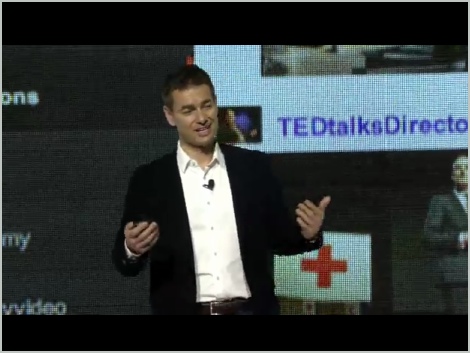-
YouTube's Content Head Kyncl at CES: The Niches Rule
Yesterday, Robert Kyncl, YouTube's VP of Global Content Partnerships, delivered a keynote address at CES with one overriding message: the future of video is all about the niches. Whether highlighting the success of Michelle Phan, a YouTube star that outdraws the Style Network on cable, the virtues of a forthcoming dedicated "Yoga Channel" for 17 million enthusiasts, or noting that the top 5 YouTube partners today all have audiences big enough to rank them among the top 20 TV networks, Kyncl made clear that YouTube is staking its future on the video industry fracturing into highly-specialized viewing segments.
That world view is no surprise given YouTube's much-publicized $100 million investment to create one-hundred channels of niche original programming. And it also follows historical precedent: as Kyncl explained, over the past 30 years, the TV industry has moved from 3 broadcast networks having 100% audience share to today where over three-quarters of viewing is fragmented over the plethora of cable networks. As the panel which followed Kyncl's presentation agreed, online video is creating a "third wave" of programming, building on the cable's success in appealing to particular viewer interests.
YouTube's big opportunity in the niches is enabled by the Internet's unlimited, low-cost shelf space. Whereas pay-TV delivery has been constrained by the cost of transmission and the navigation hurdles that channel proliferation create, YouTube has much greater flexibility. On the Internet, anyone from amateurs to brands to professional producers, can put up their video and instantly become a low-cost global broadcaster.
But launching a channel is just a first step; the real challenge of course is getting found. For every Michelle Phan with nearly 2 million subscribers, there are hundreds of content creators struggling to build audience. And this is where YouTube's unparalleled scale is so significant for its niches initiative. With 800 million monthly viewers of 3 billion plus videos, YouTube has enormous promotional leverage to give its content partners visibility. That reach is combined with technology to track and understand each viewer's interests, so that only targeted, relevant content is surfaced. For top-drawer Hollywood talent like CSI creator Anthony Zuiker (on the subsequent panel), who's used to broadcast TV's reach, and is now a YouTube partner, YouTube's scale and targetability are huge differentiators.
In his remarks, Kyncl cited lots of data supporting YouTube's scale, as well as other online video players like Netflix, Hulu and CBS, repeatedly using terms like "incredible," "amazing," "unbelievable" and "magical" to underscore the gigantic wave everyone in the online video is currently riding. While YouTube's growth has indeed been astounding, it has also been mostly organic, fed by user-generated content and sharing.
What's changed now is that YouTube is starting to act like a market leader, exerting its influence on the future direction of the video industry. In my view, YouTube's role is as "strategic catalyst," providing necessary financial and promotional support for a new generation of niche content creators. But content isn't YouTube's only focus; it is being equally aggressive in innovating in advertising, promoting "TrueView," a cost-per-view or engagement model that greatly differs from the TV industry's traditional impressions-based approach.
Add it all up and throw in Google, the biggest sugar-daddy on the planet, plus the proliferation of connected devices, and YouTube is poised to be an extremely important player in the video industry going forward. Its niche-oriented playbook is just starting to be understood, and it must be watched closely.
Categories: Advertising, Aggregators, Indie Video


